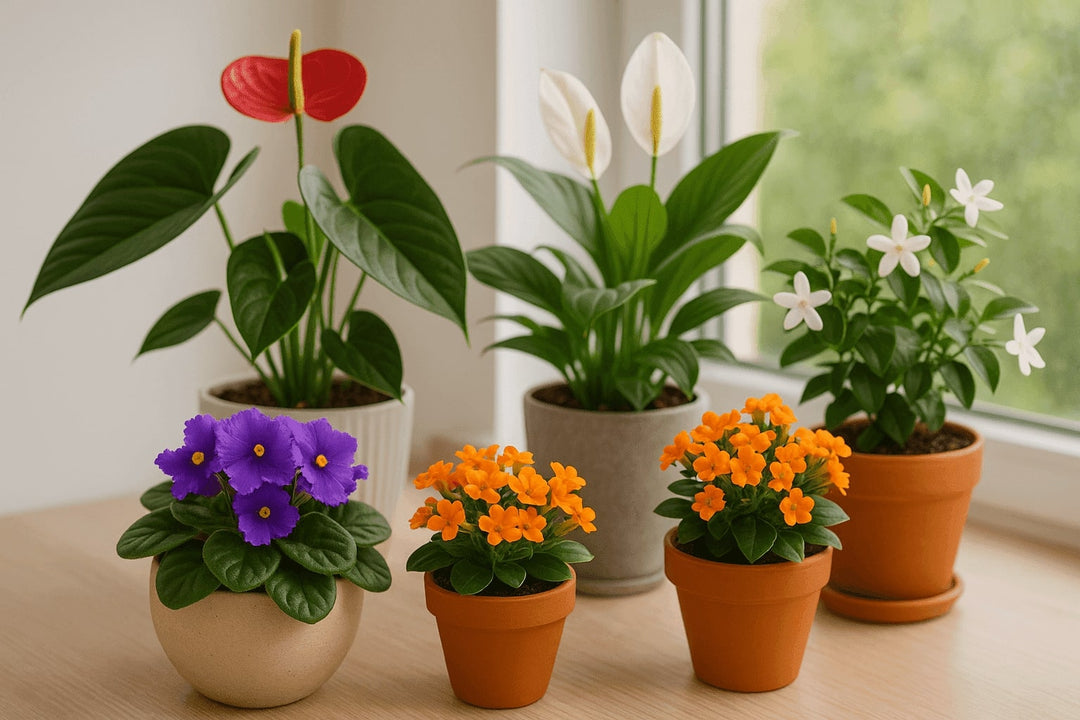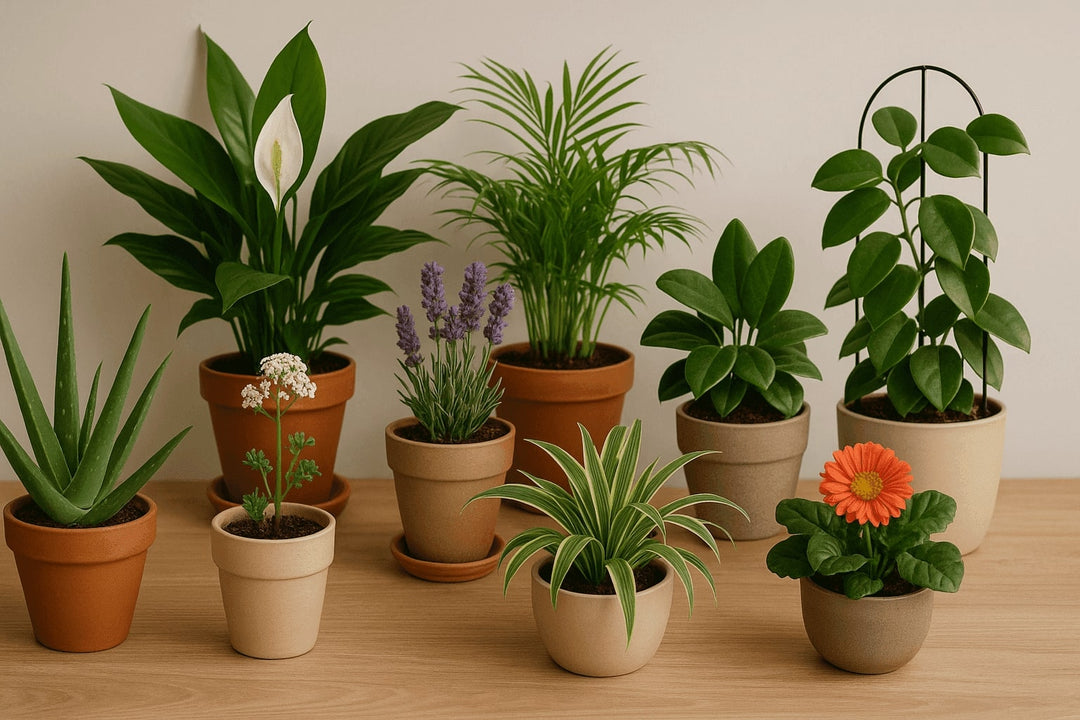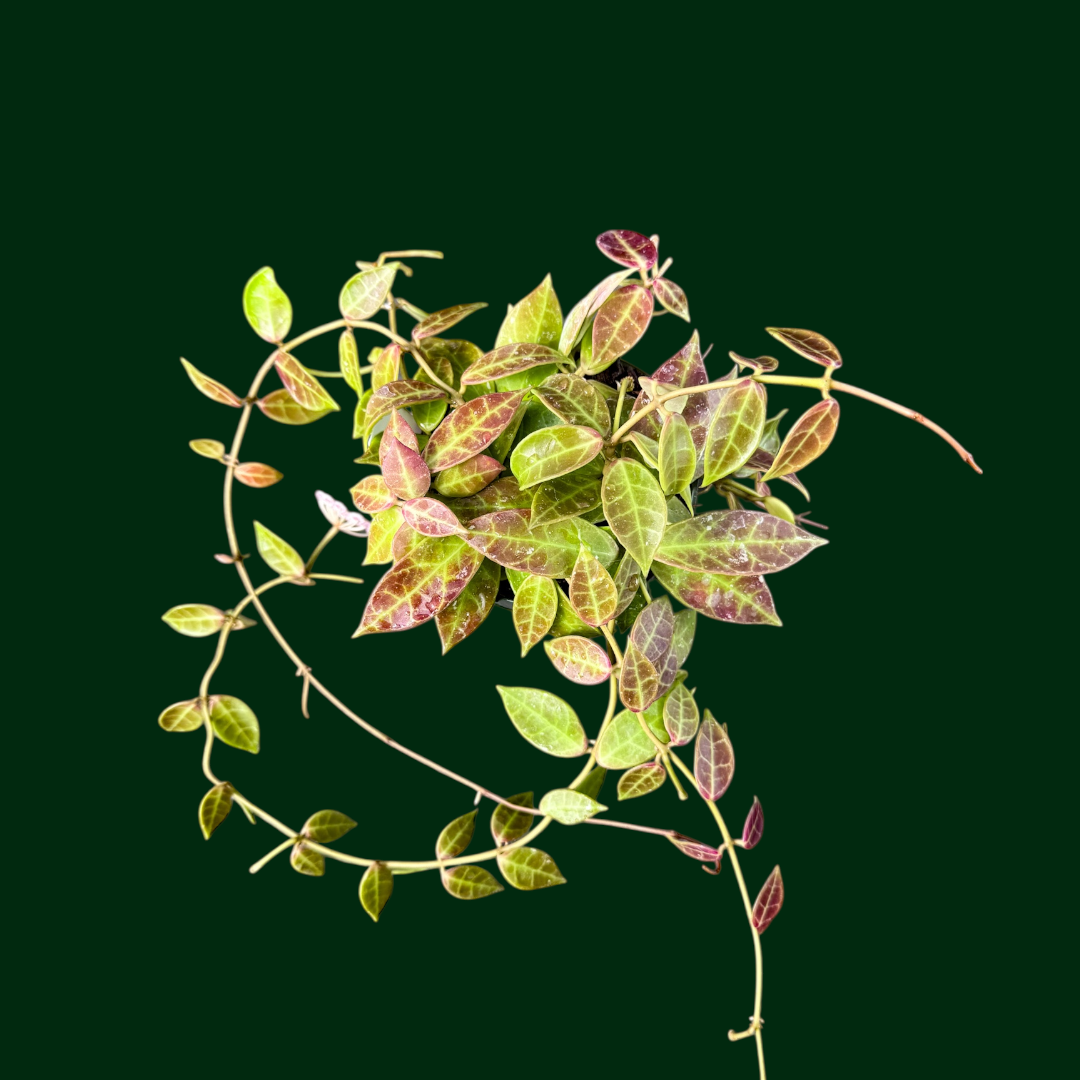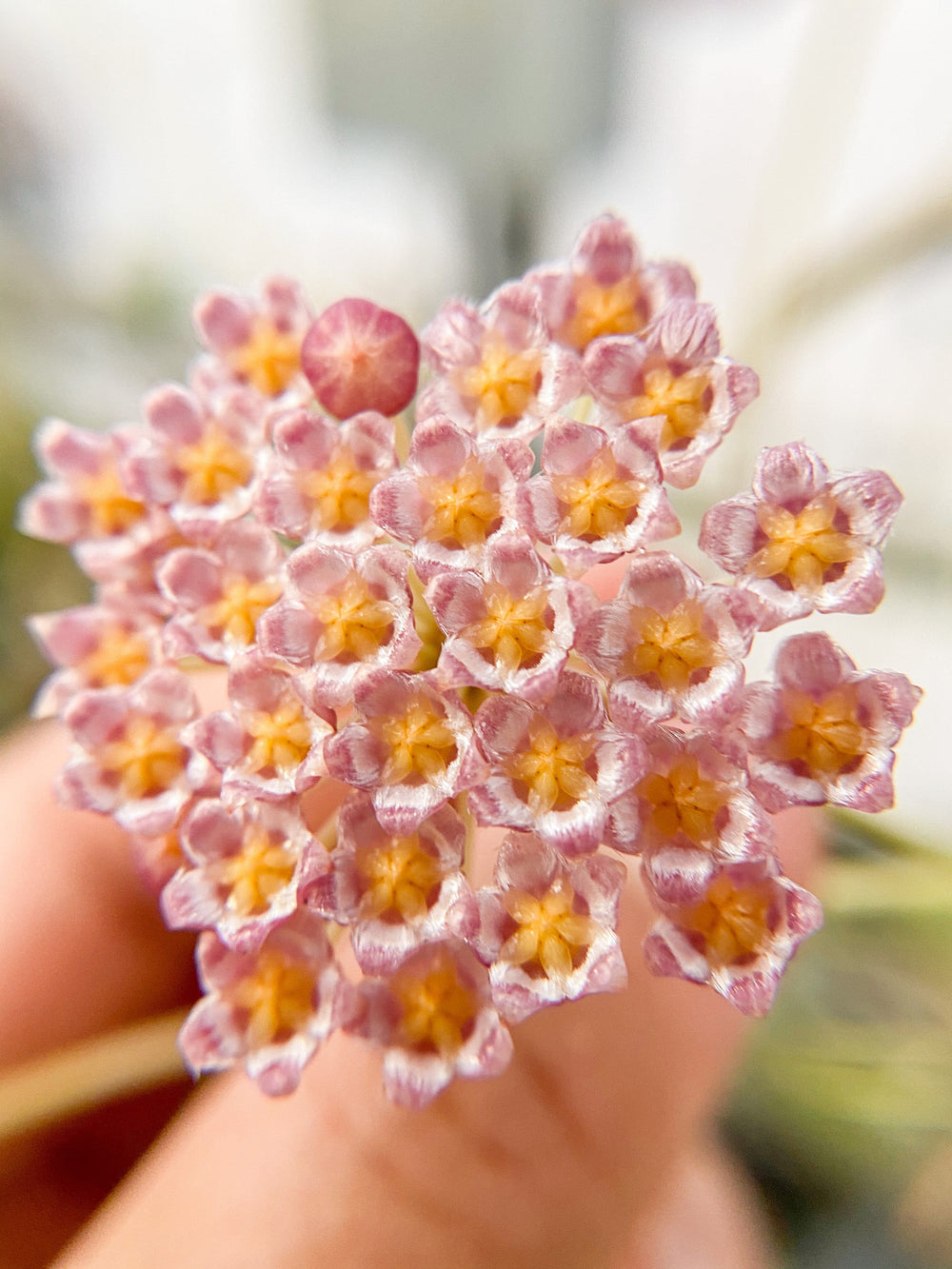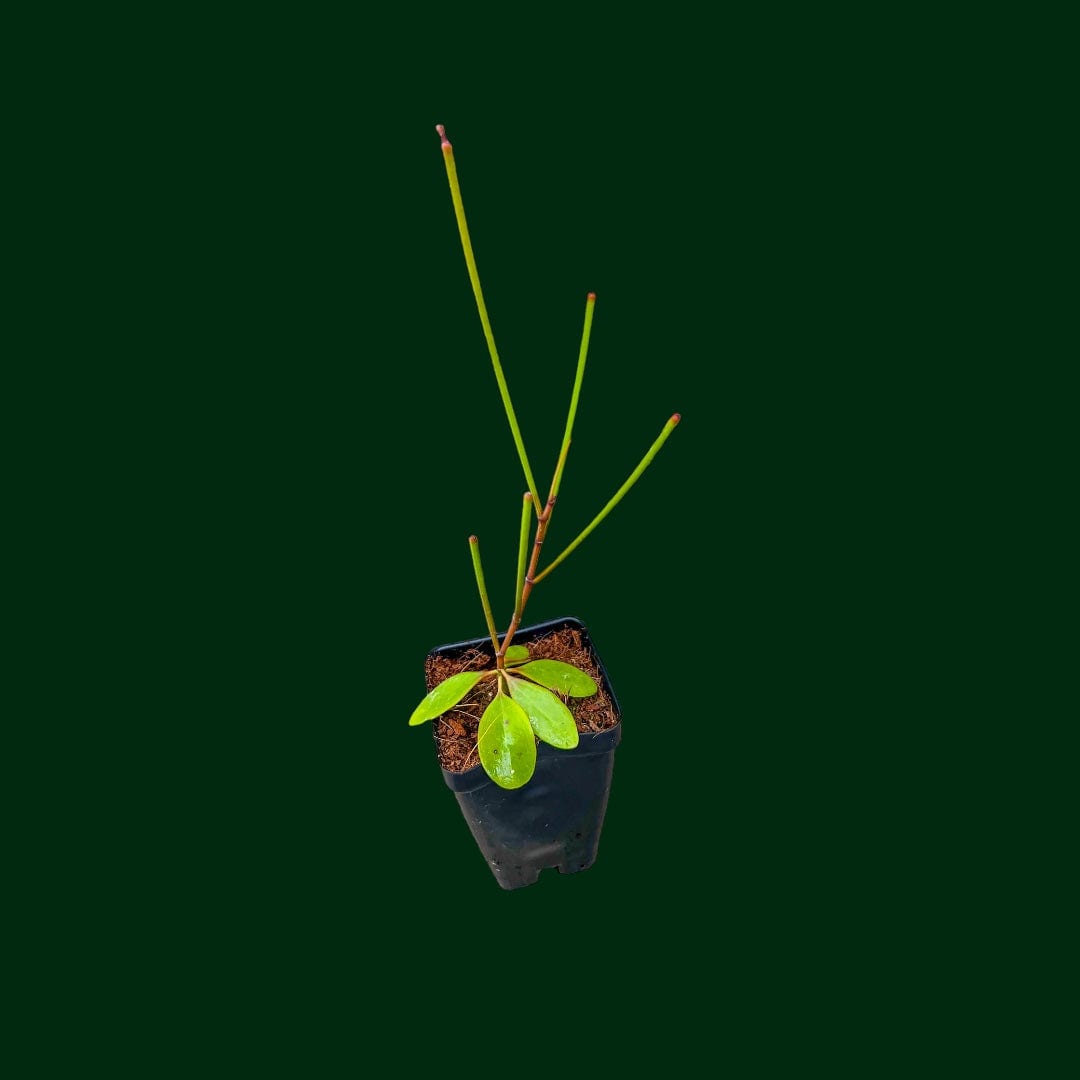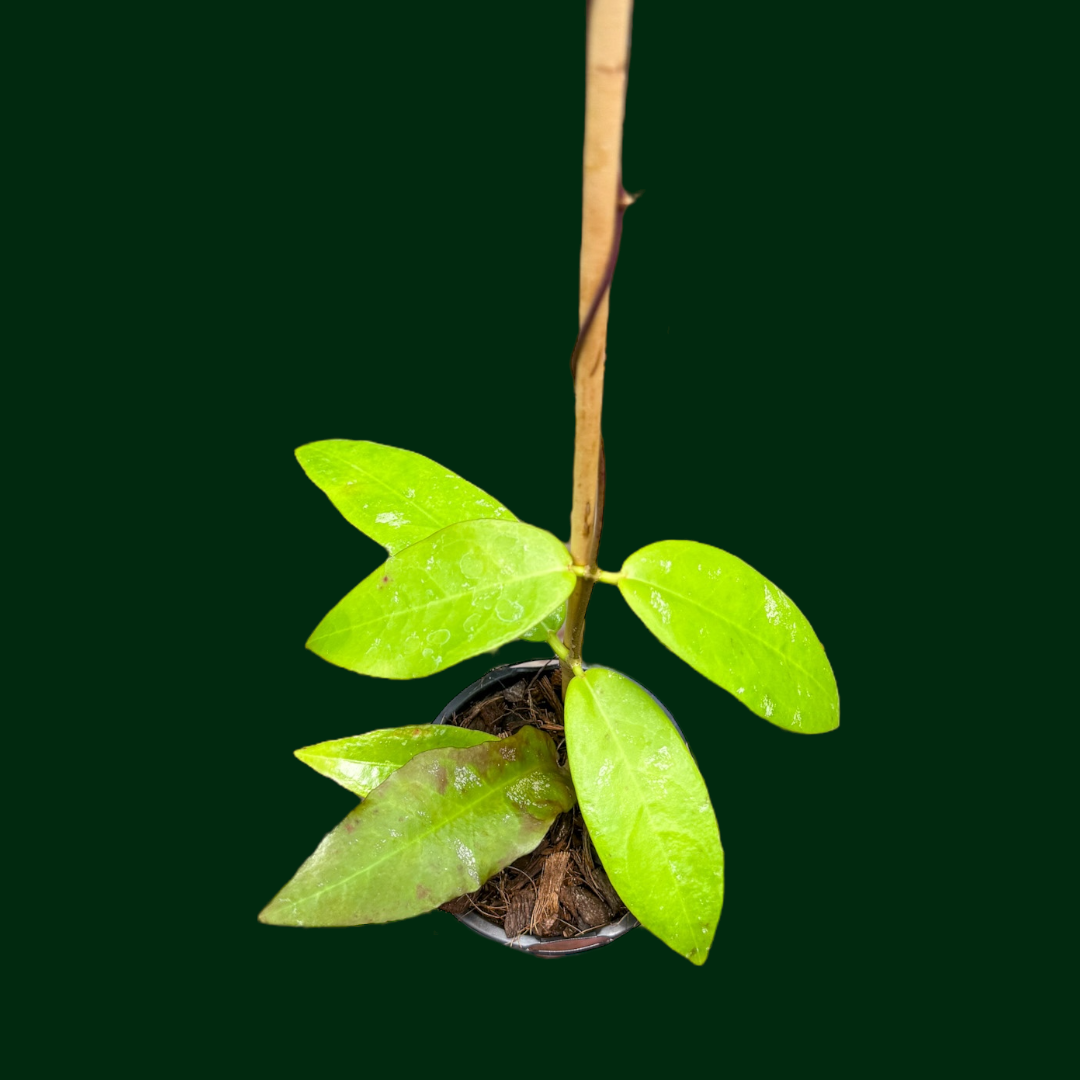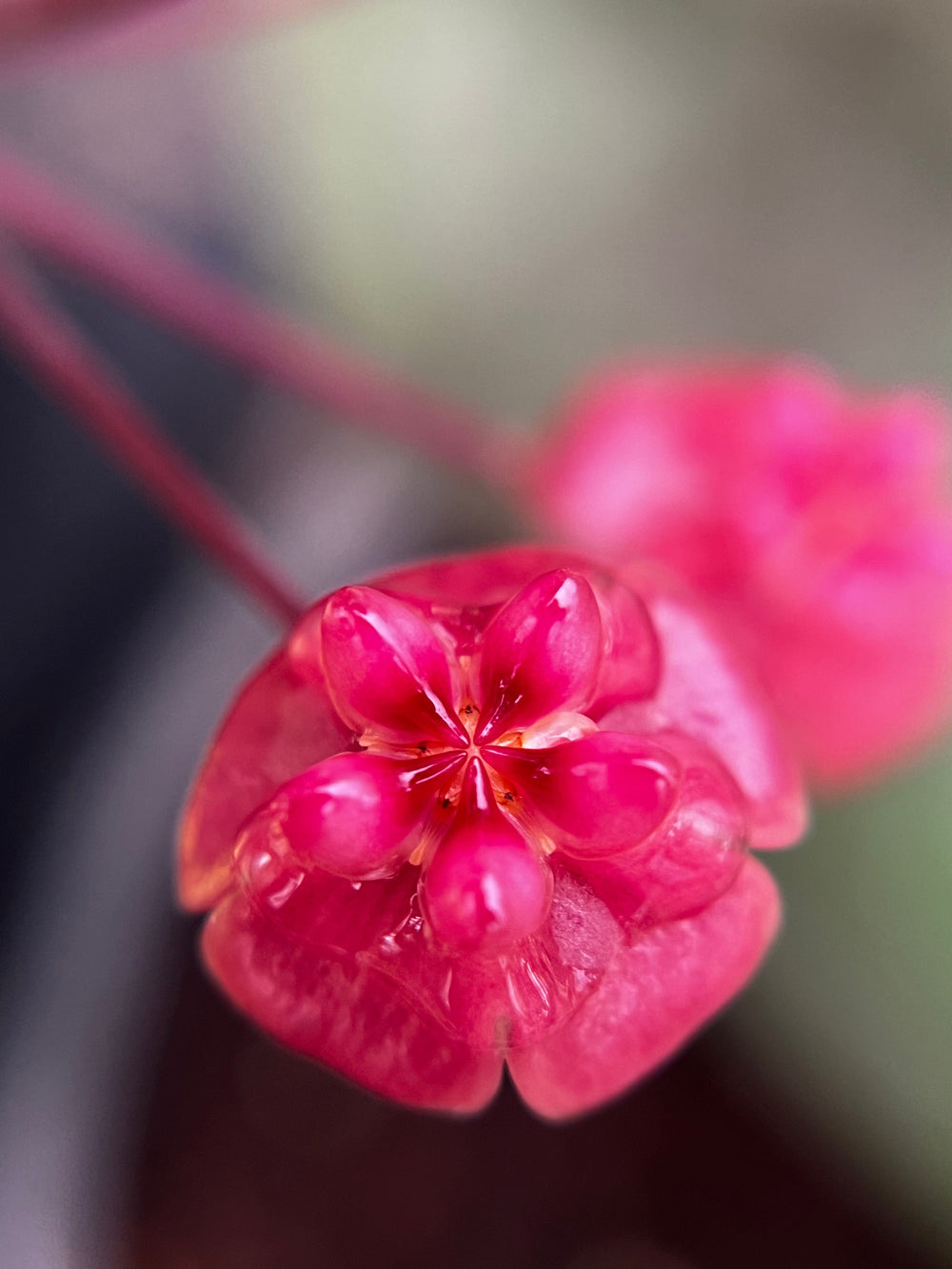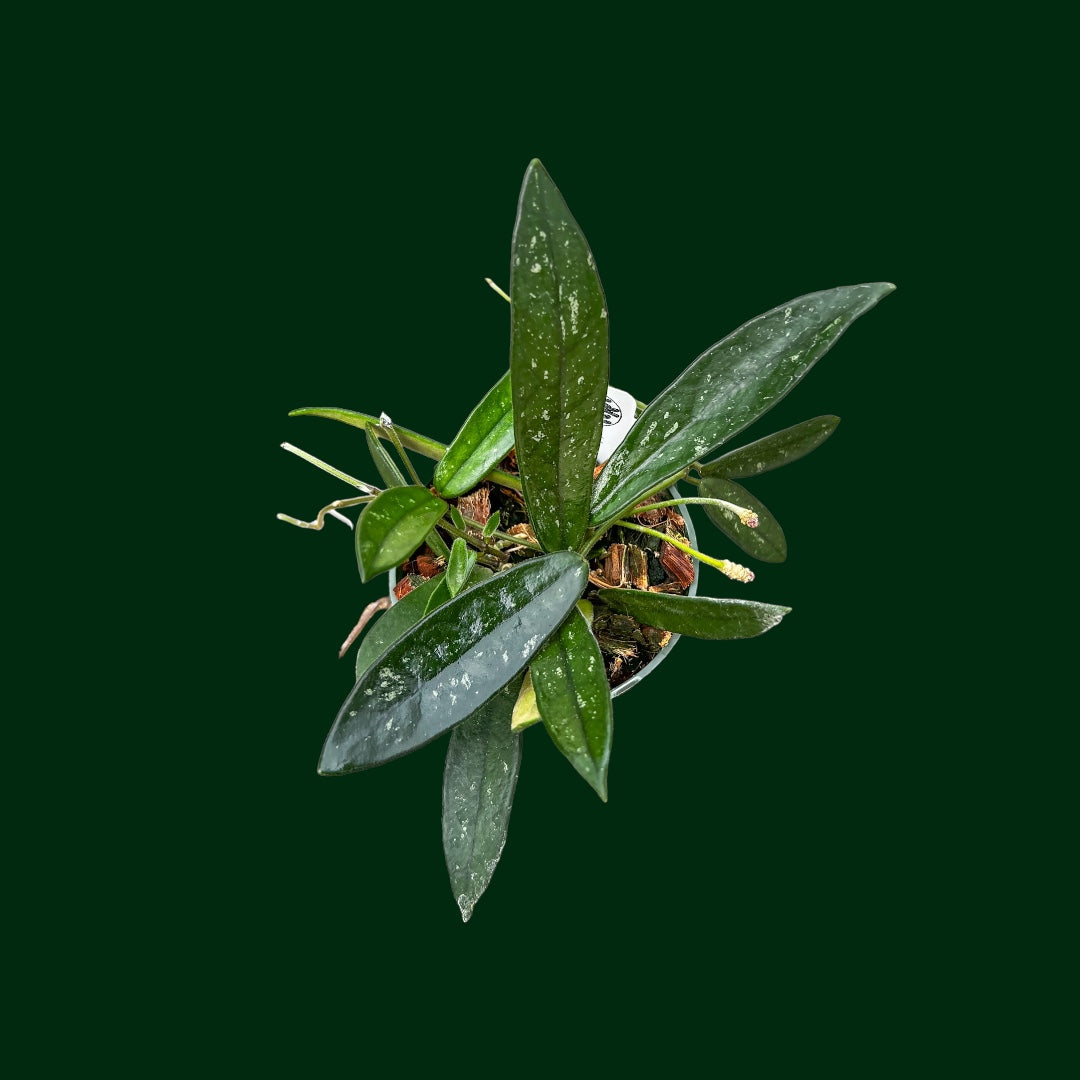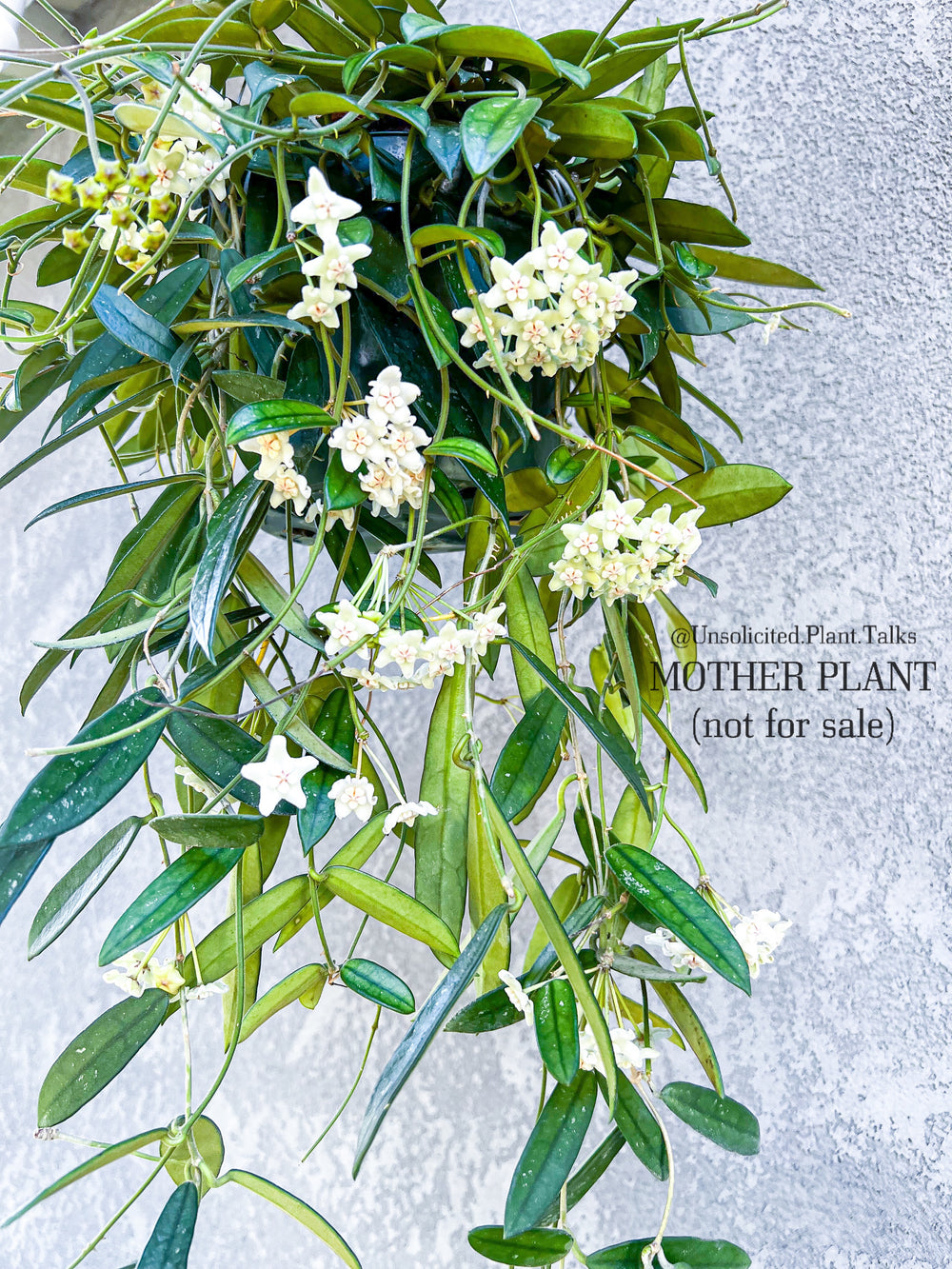How to Propagate Hoya
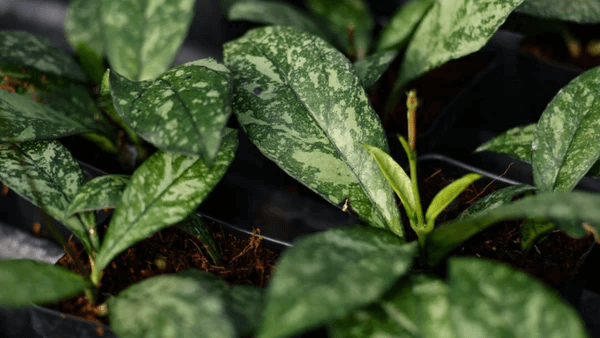
Table of Contents
- Frequently Asked Questions about Hoya Plant Propagation
- Choosing the Propagation Medium
- Propagation Methods
- Moving the Cutting from the Propagation Medium to the Potting Mix
- Watering the Hoya Props
- Patience is Key: Rooting Timeframes for Hoyas
- Hoya Vines Dying After Propagation
- Propagating Small Leaf Hoyas
- Propping Cool Growers
- The Bottom Line
As a Hoya owner, especially one who wants to have more of those gorgeous plants, you will more than likely find yourself in need of propagation, which is the process of taking parts of the mother plant and planting them in separate pots in order to allow them to grow into their own, full plants while still resembling the mother plant.
However, Hoya propagation can be challenging if you’re doing it for the first time, so to make the process easier, we answered some questions we get asked quite a lot. We’ll also share some tips and tricks to help you grow your plant collection. All of this is based on our personal experience with Hoya plants.
We also encourage you to watch our two-part Q&A, where we share even more of our knowledge about propagating your Hoya plants!
Frequently Asked Questions about Hoya Plant Propagation
What medium should you use to propagate a Hoya plant?
The medium you choose should be able to hold moisture but at the same time have enough aeration that it doesn’t cause the roots to rot. A mixture of husk and coir works great.
Do I have to move the cuttings from the propagation medium to the permanent potting mix?
It depends on the potting medium you’re using. If you’re using the husk and coir combination, then no, as it’s a good choice both for propagation and long-term growth once the cuttings develop roots. The same goes for Sphagnum Moss, as you might accidentally damage the plant’s roots when moving it, so it’s better to just let it be.
If you’re using other propagation mediums, however, like Leca or Perlite, then yes, you will need to move the cuttings.
How often do I have to water my Hoyas while propagating them?
The rule of thumb is that the medium should be moist, as it keeps the roots active. How often you’ll have to water it exactly depends on the type of medium you’re using. Keep in mind that it’s always better to underwater than overwater Hoyas, as too much water can cause the roots to rot.
How long does rooting take?
It all depends on the Hoya variety you’re propagating - it could take anywhere from a few weeks to a few months, even with perfect growth conditions, so don’t be discouraged if you don’t see results right away. One example of a variety that takes quite a while to root is Hoya rotundiflora.
The vinestendrils dried out - what now?
The answer is nothing. It’s completely normal for the tip of the Hoya cutting to die - and while it might be upsetting, it usually doesn’t affect the growth of your plant. Quite the opposite - oftentimes, it actually leads to a bushier growth.
Should I be using fertilizer?
Yes, fertilizer is a great way to ensure your plant is getting all the necessary nutrients through the soil, allowing it to grow properly. However, different plant and potting mix types might react differently to fertilization, so it might be best to start with a diluted fertilizer.
Should I be using rooting powder?
Rooting hormone powder can help your plant develop a root system, especially when weather conditions are less than favorable for growth. If you’re dealing with slow rooting, it might be the perfect solution, as it activates specific chemicals in the plant that help them root faster. We’ve been using this one, and it’s honestly been working quite well for our Hoya plants.
Can I propagate small leaf Hoyas?
While it might be more challenging to propagate small leaf Hoyas 'Bella' and lacunosa, it’s not impossible. It’s best to use a small container filled with pure coir and wait until the coir is completely dry before watering.
How to propagate cool growers?
The thing with cool growers such as Hoya medinillifolia is that you need to be careful not to burn their leaves. If you notice that the leaves of your plant start yellowing, leave them be - the cutting might still be able to produce roots. Once new leaves start growing, you can remove the yellow ones.
Choosing the Propagation Medium

The first step you want to take care of before reaching for your cutting shears is choosing the right propagation medium. Your stems cannot thrive if they don’t have the right foundation. Personally, we like to use a combination of Coco Husk and Coco Coir, as they give the plant room to grow without stressing it too much.
We don’t recommend using only the husk, especially in hot and dry climates, as they tend to lose moisture very quickly. Thanks to the addition of the Coir, in proportion 25:75, we can achieve a propagating medium that holds moisture efficiently while still providing the plant with sufficient aeration. We also like to add a small layer of coir on top, as it prevents gnats from breeding there.
Propagation Methods
There are three ways to propagate your Hoya.
The first one is stem cutting, where you pick a stem that has at least two nodes and cut it off from the mother plant under the lowest node. The second is leaf cutting - in which you use a healthy leaf with a short piece of stem to grow your new Hoya plant. In both cases, once cut off, dip the cutting in the rooting hormone and then transfer it into a potting soil or soilless mix.
The final method is called layering. Here, you pick a stem that is long enough for you to be able to bend it. Make a small cut right where the stem and soil meet, and pin it down with a U-shaped stake or a piece of wire. Add some rooting hormone, and cover the stem and the pot with a plastic bag or wrap, creating a mini greenhouse.
Moving the Cutting from the Propagation Medium to the Potting Mix
As mentioned, you don’t have to do this every time - if you're using the Coco Husk and Coco Coir mix as we do, there’s no need for you to transition the cutting.
If you’re using something different, however, the main thing you should keep in mind is disturbing the roots as little as possible. When transferring your cuttings, leave some of the existing medium rather than removing it completely, as it will minimize the root shock and ensure a smoother transition.
Watering the Hoya Props
 When it comes to watering your Hoya props, what you need to remember is that the medium should remain moist, as it helps roots remain active. Hoyas are quite forgiving when it comes to watering, so even if you forget to water it a few times, it won’t be that big of a deal. It’s better for them to have too little than too much water.
When it comes to watering your Hoya props, what you need to remember is that the medium should remain moist, as it helps roots remain active. Hoyas are quite forgiving when it comes to watering, so even if you forget to water it a few times, it won’t be that big of a deal. It’s better for them to have too little than too much water.
Here are a few tips for watering your Hoya cuttings:
- Check the moisture level before watering. If the tip of the soil is still moist, you can hold off watering for a few days.
- When watering the plant, make sure that you give it a good soak - you should be able to see water draining out of the drainage holes in the bottom of the pot. You can also opt for bottom watering to avoid pests.
- If there’s water in the saucer or tray under the pot, empty it. While Hoyas do not mind moist soil, they don’t like sitting in water - plus, it can lead to root rot.
- Pay attention to your plant and adjust the schedule accordingly - if the leaves of your Hoya start to yellow or the roots start rotting, it means you’re overwatering it and need to adjust the watering schedule.
Patience is Key: Rooting Timeframes for Hoyas

Lastly, let's talk about the timeframe for rooting Hoyas. It's important to have patience when propagating these plants as they can take some time to establish roots and new growth.
Depending on the Hoya variety and environmental conditions, rooting can take anywhere from a few weeks to several months. Some varieties root quickly, while others may take longer. Don't be discouraged if you don't see immediate results. Keep providing the right conditions, including proper lighting, warmth, and moisture, and let nature take its course.
Remember, the joy of propagating Hoyas lies in the process itself. Enjoy observing the growth and development of your cuttings as they transform into healthy plants with their unique characteristics.
Hoya Vines Dying After Propagation

One of the most common challenges plant enthusiasts face when propagating Hoyas is the drying out of tendrils during the rooting process. But don't worry, it's not the end of the world if your tip dies. In fact, it's quite normal and expected.
When we propagate, we usually take a stem cutting so that we're left with one node, two leaves, and the stem that we're trying to root. This is because there's a possibility that the tip of the hoya cutting might die off during the rooting process. However, this doesn't necessarily hinder the growth of your Hoya. In fact, it might even lead to a bushier growth, which many plant enthusiasts prefer.
Propagating Small Leaf Hoyas

Small leaf Hoyas like 'Bella' and lacunosa can be a bit more challenging to propagate. They require a bit more finesse and a slightly different approach. For these, we recommend using a small container filled with pure coir and watering only when the coir is dry. This way, your chances of rot are smaller.
Propping Cool Growers

Propping cool growers without burning their leaves can be a challenge. For example, medinillifolia seems to thrive more in cooler conditions. If the leaves start yellowing, we usually leave the plant as it is, hoping it will support the plant long enough to produce roots. Once the new leaves grow, we simply remove the yellowed ones.
The Bottom Line
Even though it can take months after propagating to see some rooting, it will all be worth it in the end, as before you know it, you’ll be rewarded with more beautiful plants to take care of - not to mention the satisfaction that comes with knowing that you contributed to it.
Just keep in mind - every plant is different, so what works for one of your Hoyas might not work for another. It truly comes down to trial and error. If, after reading our guide, you still have some questions, don’t hesitate to reach out to us at support@unsolicitedplanttalks.com - we’ll be more than happy to help with your inquiries. And in the meantime, why don’t you take a look at our blog for more things Hoyas?



